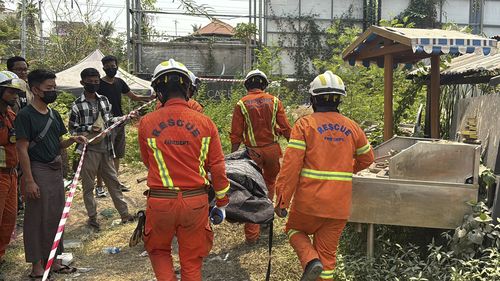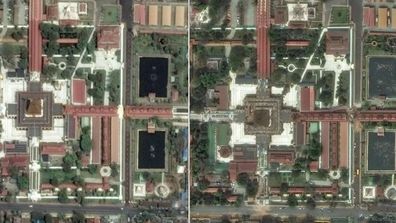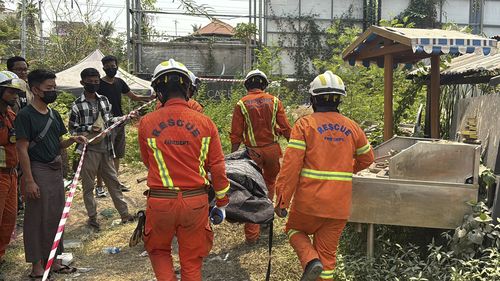Share this @internewscast.com
Information Minister Maung Maung Ohn also announced at a meeting in the capital, Naypyitaw, that 4589 people were injured and 221 others were missing, state television MRTV reported.
The epicenter of the 7.7 magnitude quake on March 28 was near Mandalay, Myanmar’s second-largest city. It brought down thousands of buildings, buckled roads and destroyed bridges in multiple regions.

As concerns grew that ongoing fighting could hamper humanitarian aid efforts, the military declared a temporary ceasefire Wednesday, through April 22. The announcement followed unilateral temporary ceasefires announced by armed resistance groups opposed to military rule.
The military said that it would still take “necessary” measures against those groups, if they use the ceasefire to regroup, train or launch attacks.
Already on Thursday, there were reports from local media in Kachin state in the north of Myanmar that military attacks continued in several areas, but they couldn’t be independently confirmed.

Before and after: Satellite images show destruction caused by Myanmar earthquake
Prior to the earthquake, the military was battling the Kachin Independence Army militia group. The KIA on Wednesday also declared a ceasefire but reserved the right to defend itself. It was unclear how the reported fighting broke out.
The earthquake shook Kachin, but there have been no reports of damage there.
In Bangkok, where the quake brought down a skyscraper under construction, the search for survivors and bodies continued as Governor Chadchart Sittipunt said that a possible sound of life was detected in the rubble. By near day’s end, however, nobody was found.
Twenty-two people were killed and 35 injured in the city, mostly by the collapse of the unfinished building.
















